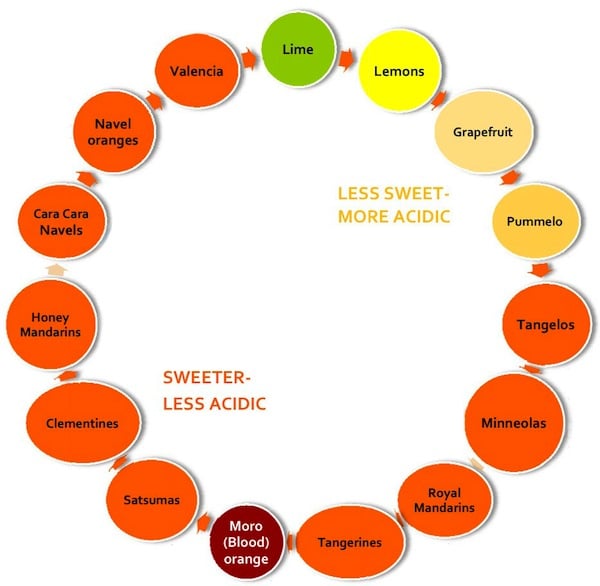What: Winter citrus. While conventional grapefruits and oranges are available year-round, the colder months yield lesser-known citrus fruits, such as Satsuma tangerines, tangelos, and Cara Cara and Valencia oranges. When you go to the market, “watch for the new citrus that’s coming in,” says Field to Plate founder Amanda Archibald, a dietician who teaches culinary nutrition around the country. “It’s newer off the tree and should have more nutrients because it hasn’t been sitting on a shelf.” She suggests using her flavor “wheel” to decide which fruits best suit your taste.
When buying citrus, look for those that feel heavy for their size—it means they have a higher juice content, and fully mature oranges have the most antioxidants. You can store them on the counter or in the refrigerator, but keep them loose; plastic bags collect moisture, which could cause mold. Keep dried zest in an airtight glass container in a cool, dry space.
Why it’s good for you: It’s no secret that citrus packs lots of Vitamin C—according to the World’s Healthiest Foods (WHF) Web site, an average orange has 116 percent of the recommended daily value. In addition to helping you recover from a cold—although it doesn’t help you stave one off—Vitamin C helps strengthen bones, tendons, and ligaments, and has antioxidants that reduce the risk of cancer and cardiovascular disease. Citrus is also a good source for fiber, potassium, calcium, and a bevy of other nutrients. The Food and Agriculture Organization of the United Nations notes that citrus has no fat, sodium, or cholesterol.
What the experts say: The pith—or the pesky white stuff that clings to the fruit and is often discarded—as well as the peel are actually full of nutrients. There’s an organic compound in them, herperidin, that’s linked to lowering blood pressure and cholesterol, says WHF. If you plan to use the peel, make sure you buy organic fruit; conventional ones often have wax or pesticide residue on the outside.
How to incorporate citrus into your diet: Instead of tossing the peel, Archibald suggests using a Microplane or other small-tooth grater to zest the fruit. She says you can use it in salads, vinaigrettes, or to flavor a sauce. This time of year, Archibald cuts the fruit from one of each of a number of citrus varieties and tosses the sections with sliced fennel and cayenne. (“It’s stunning!” she says.) She finishes the salad by squeezing the peels to extract their oils.
Recipes to try:
• The Kitchn’s Five Ways to Use Dried Citrus Peels
• Caramelized-Tangerine Vinaigrette
• Salad With Orange, Parsley, and Walnuts
• Spiced Oranges in Red Wine
• Cara Cara Orange Tart
Subscribe to Washingtonian More >> Health | Top Doctors | Well+Being Blog
Follow Well+Being on Twitter



















